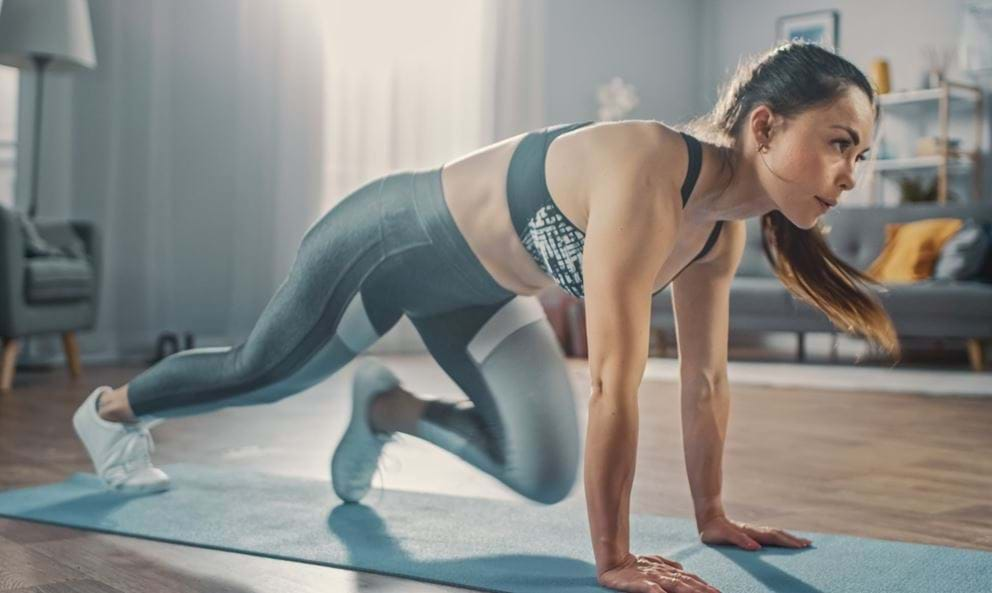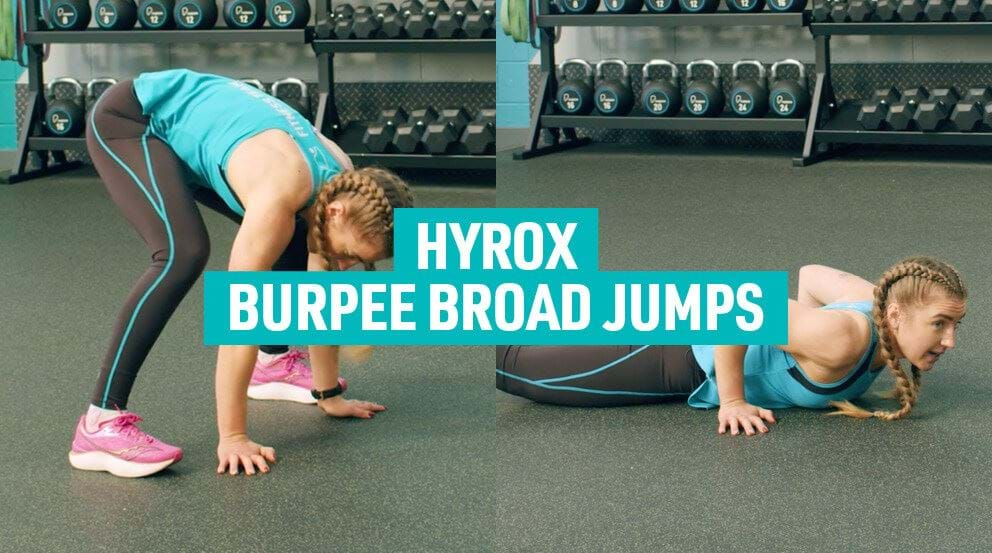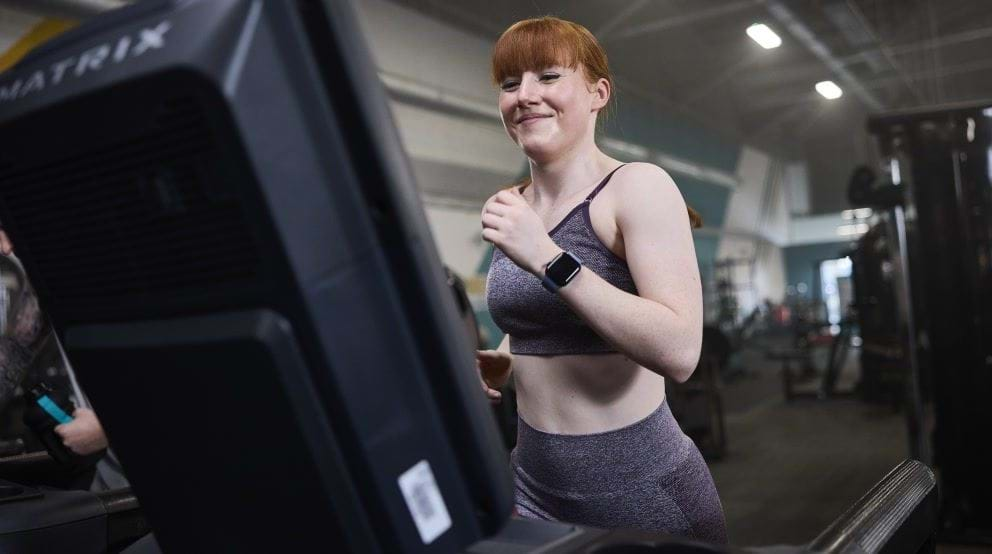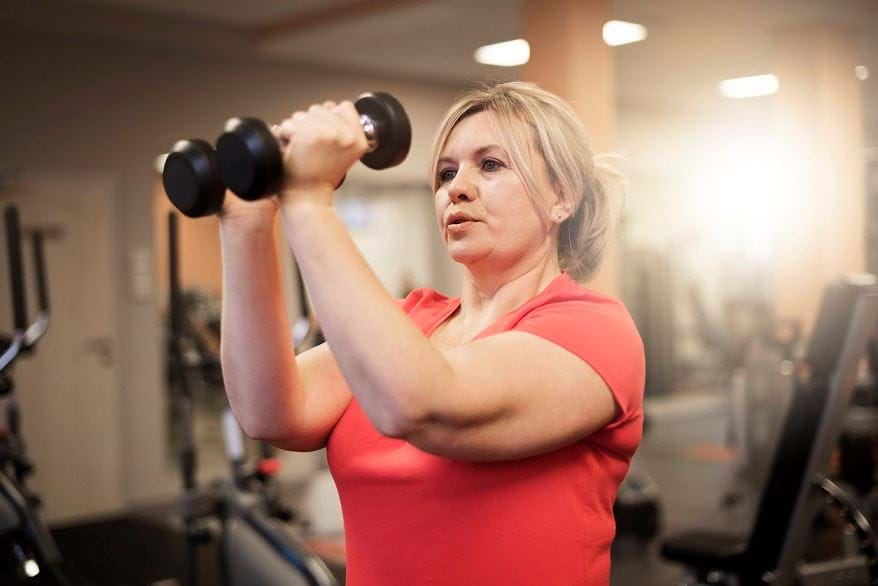The best HIIT workout for you

What Is HIIT | Improve Endurance | Getting Started | For Beginners | For Over 50s | For Weight Loss | For Runners | For Cyclists | Increase The Challenge
Page last updated: 18th November 2024
If you're short on time and want to improve endurance and build strength, then High Intensity Interval Training, also known as HIIT, could be the best workout style for you. If you're short on time and want to improve endurance and build strength, then High Intensity Interval Training, also known as HIIT, could be the workout for you.
What is HIIT?
HIIT is a form of interval training, which alternates short periods of intense exercise with periods of recovery. It has become a popular training method with people who want to increase their fitness and get a quick workout in.
During a HIIT session, you work from a low or moderate intensity to high intensity or maximum exertion. This might be going from a slow jog to a 20 -30 second sprint. You then return to a lower intensity, before repeating this cycle again a number of times.
HIIT can include many exercises such as running, cycling, rowing, or squatting. The workouts are good for improving aerobic fitness, overall conditioning and expending energy, which can help to promote weight loss and fat loss.
Improve your endurance with HIIT
HIIT workouts develop both aerobic and anaerobic endurance. During the aerobic (lower intensity) phase your body will use oxygen as the main energy source. This will help improve your circulation, getting oxygen to the working muscles much more quickly and efficiently. Aerobic exercise, which uses the body's slow-twitch muscle fibres, can be sustained for long periods of time. If you're running a marathon this is the energy system that would be used.
During the maximum intensity phase of the HIIT workout, your body will be using the anaerobic energy system. This system does not use oxygen, so is only used during short bursts of intense activity. It uses fast-twitch muscles fibres, and only lasts a few seconds, up to a minute. Exercises where you'd use the anaerobic energy system include sprinting, or high-intensity weightlifting.
The combination of aerobic and anaerobic means you'll be working out of your comfort zone. Instead of jogging along at a steady pace, you'll challenge your body to adapt to the faster, more intense workout. If you want to improve your endurance in a sport or for your general fitness, it could be worth incorporating HIIT sessions into your workout routine.
Learn more about the benefits of HIIT training and workouts here.
Starting HIIT Workouts
If you want to try HIIT, first you should identify your goal. Whether you want to lose weight, shape up, or take your fitness to the next level, HIIT can help.
Consider your schedule. How much time do you have to train? Finally, consider what discipline you'd like to use for HIIT. It can be anything from cycling or running to squats. The key is to work at a high intensity.
HIIT has lots of benefits, but be warned, it's not for the faint hearted. It's a tough workout that can be fatigue inducing so planning and recovery is essential. If you're looking to try HIIT start from easier pace that's comfortable and gradually build up as you get fitter and stronger. Make sure to take the time to warm up and cool down properly. And remember to listen to your body, adapt the workout according to how you feel, and train sensibly.
Watch the video below to learn more about the benefits of high intensity training.
Best HIIT workouts for beginners
If you're new to HIIT and you're not sure which exercises are best for your HIIT workout, here are some great beginner-friendly workouts you can start with. These require no equipment so these can be completed anytime, anywhere, whether you're training at home, in the park or at the gym.
Best HIIT Workout for over 50s
The NHS recommends adults aged 65 and over to include exercises that will help build strength at least 2 days a week. As we age we tend to lose muscle mass and bone density. Including resistance training into your exercise routine can play an important part in offsetting the rate of these losses. HIIT workouts not only can help to improve cardio fitness but also strength, so it's worth considering including into your weekly workout regime.
We may find some exercises start feeling hard on our joints, so ensuring that whatever you do feels right for you is important. We also recommend not to over exert yourself to the point of exhaustion and instead focus on working at a pace that feels right for you and performing exercises with good form, even if that means slowing down.
Here are some HIIT inspired workouts that will help you to stay fit and active. Feel free to modify these to suit you energy levels and ability if you feel you need to.
Full body HIIT workout for over 50s
- 10-20 Bodyweight squats
- 3-15 Press ups
- 10-20 Glute bridges
- 8-15 Rows
- 10 -15 Calf raises
Perform each exercise back to back and rest in between if needed. After you perform all 5 exercises, take a few minutes rest and repeat the circuit 2-4 times.
Check out our HIIT For Seniors guide for more information and workout ideas. For more workout tips for older adults check out our Exercise Guide For Over 50s.
Best HIIT WORKOUT FOR WEIGHT LOSS
If your goal is weight loss, you will need to be in a calorie deficit. In simple terms that means expending more calories than you are consuming. To achieve this you can increase your daily activity through exercise and you can also try this by reducing your calorie intake (or both!). To find out how many calories you should be eating to lose weight, take a look at our calories and weight loss guide.
Being more physically active throughout the day can help you to expend more calories, which in turn can help you achieve a calorie deficit.
HIIT workouts require a lot of energy in a short space of time. If you're tight on time or have limited access to equipment, this can be an efficient way to get your workouts in throughout the week. Just make sure to work at a pace that feels right for you and allow yourself enough time to recover in between sessions as HIIT workouts can be strenuous - the last thing you want to do is over exert or injure yourself.
Learn more, along with some workouts to try with our HIIT Workouts for Weight and Fat Loss guide.
Or, Try this HIIT workout designed to help promote fat loss by targeting all muscle groups.
BEST HIIT WORKOUT FOR RUNNERS
Getting your running miles in is a key element when it comes to improving your running but conditioning your body through interval training to improve stamina and endurance is also extremely important for runners.
Depending on your running routine, you may want to look at incorporating HIIT in between your easy, your slow running sessions or rest days to get the most out of your HIIT sessions. Allow yourself enough time to recover after hard workouts.
Here is a HIIT workout tailored for runners designed to work on your leg strength and cardiovascular endurance.
In the first round perform each exercise for 45 seconds, followed by a 15 second rest. In the second round perform each exercise for 30 seconds, followed by a 10 second rest. In the third and final round perform each exercise for 15 seconds, back to back with no rest in between.
You can find more inspiration on the pages below:
Including weight training in your running routine is also important to help keep you strong and avoid injuries - check out our Strength Guide For Runners or this Running and Strength Training Workout Plan for weight training exercises you can work on to help you with your running performance.
Best HIIT workout for cyclists
Cyclists can benefit from doing short sprint intervals in their training to help boost power and endurance. Doing sprints on a bike might not be ideal outside so taking your workout indoors on a stationary bike in the gym can be a great way to improve your cycling performance, without worrying about oncoming cars or road bumps.
Here's a HIIT workout designed for cyclists you can try:
- 20 seconds pedal hard
- 40 seconds pedal easy
Repeat the above circuit 2 times
- 30 seconds pedal hard
- 30 seconds pedal easy
Repeat the 30-sec circuit 2 times.
- 40 seconds pedal hard
- 20 seconds pedal easy
Repeat the 40-second circuit 2 times.
- Pedal down easy for 3-5 minutes as part of your cool down.
We give five more examples of HIIT Cycling Workouts here. For more tips, including Sir Chris Hoy's Strength Tips for Cyclists, check out our Cycling Guides.
To help you stay active, we have over 600 free workouts and fitness classes you can follow along in our app. Download the PureGym app to get instant access. You can also read more of our blog to learn about other forms of interval workouts, such as metabolic training. You can also find another three 30 minute HIIT workouts here or four 20 minute HIIT workouts here to try as well as HIIT workouts for men and women over on our HIIT hub.
If you're looking to add variety into your fitness routine, we have over 280 gyms nationwide to choose from. All our gyms include a stretching area, free weights area, cardio machines area, fixed resistance machines area, fitness studio and functional area so no matter what your fitness goals, preferences and abilities are, we have everything you need to get a great workout in. We have also put measures in place to keep our members and staff safe when in the gym. Take a look at the TrainSafe measures and Frequently Asked Questions (FAQs) for more information.
How To Take Your HIIT To The Next Level
Looking to push your HIIT skills and challenge yourself even further? Here are some of the best ways to spice up your HIIT workout and kick it up to the next level.
Throw in some Tabata training
Tabata training is named after Japanese Dr. Izumi Tabata, who conducted exercise-based trials on subjects. His research found that those who did a high-intensity, 4-minute training session four days a week for six weeks, experienced much greater aerobic and anaerobic benefits than subjects who did a 1-hour moderate intensity training session five days a week for six weeks.
Tabata training is a classic HIIT approach. It involves starting with a 20-second all-out effort on a given exercise, followed by a 10-second rest period, and then a repeat of the 20-second max effort.
Tabata training is extremely tough, extremely time-efficient, and extremely versatile. It can be applied to any exercise (or group of exercises) you could imagine -- be it a combination of bodyweight or weight training moves.
We explain more in our Tabata Workout guide.
Train with a prowler sled
Training with a prowler sled is one of the most effective ways of exhausting your entire body. It also does a fantastic job of strengthening the posterior chain -- including glutes, hips, and back, which improves your deadlift performance and overall strength. By the time you're done with a prowler workout, your whole body will be on fire -- and with regular practice, your explosiveness and athleticism will skyrocket.
Using a prowler sled for HIIT couldn't be "easier." Simply load on the appropriate amount of weight to really challenge yourself, push the sled as hard and fast as possible for the allocated time, and then take a break.
You could follow the Tabata structure when using the prowler -- 20 seconds of max intensity pushing, 10 seconds rest, and repeat for 4 minutes. On the other hand, you could use a more straightforward approach and push the sled until you just can't push anymore, at which point you'd jog around for a minute before attacking the prowler again.
Turn your martial arts drill into an HIIT session
Martial arts drills are a great way of increasing not only your fighting skill, but also your cardiovascular fitness and even your muscular endurance (try punching or kicking a heavy bag as hard and fast as you can for 10 minutes, and you're bound to feel the burn).
With a small tweak or two, you can seamlessly integrate HIIT principles into your regular martial arts practice. Not only will you reap the benefits of HIIT, but your art will also improve (provided you force yourself to maintain correct form and protocol) by getting you used to fighting while stressed and exhausted. Needless to say, that's a useful skill to have, either in a self-defence situation or if you're planning on competing.
Check out our Boxing Workout Routines guide for advice and inspiration.


